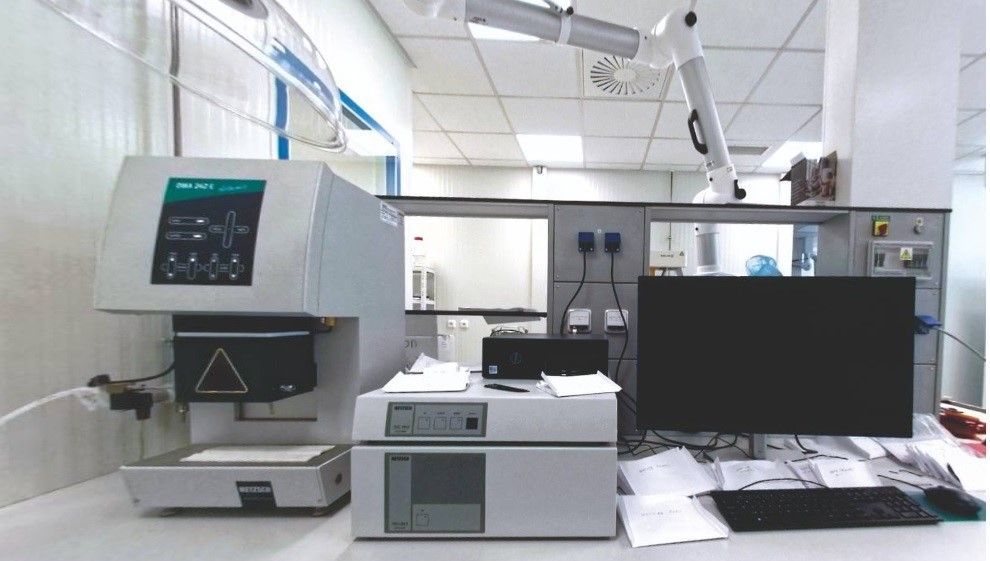What is POLYMER NANO CENTRUM?
Discussing POLYMER NANO CENTRUM’s goals, operation, and plans for the future with company CEO Pavel Kuchalik.

POLYMER NANO CENTRUM is breaking barriers in the field of nanotechnology and the application of nanomaterials in industry.
This is creating a significant amount of attention from the manufacturing sector, as polymer producers consider what benefits their products could gain with the intelligent application of raw materials with the same diameter as DNA.
Here, in the first of two interviews, Pavel Kuchalik, CEO, outlines the company’s history, current position, and its plans for the future.

Interviewer: Hello. Today, we will talk a little about polymer modification, the use of nanotechnology in industrial production and, last but not least, how to get involved in these innovations relatively easily.
Firstly Pavel, let me ask you, your company was founded less than 20 years ago, how did the business start?
Kuchalik: Our company has been dealing with nanotechnology only in the last handful of years, as the original core company was AG CHEMI GROUP s.r.o. a supplier of chemical raw materials, primarily for the glass, ceramic, agricultural, and oil industries.
Interviewer: So, why the decision to move into the field of nanotechnology?
Kuchalik: The change began a few years ago, sometime around 2015, and was based on a couple of factors. First of all, it was an effort to diversify our activities. And secondly, it was our realization that the future is not just in some simple sale and resale of industrial materials, but instead to become involved in the field of production and development – to add value to raw materials.
For some time, we were looking for areas of interest, analysing business needs, conducting market research, and studying the needs of various areas of industry, until and we came up with the application of nanotechnology.

Instantly, we saw what a great future this sector has, not only in terms of revenue, but also from the aspect of usability and the needs of various industries. Nanotechnology is not simply an area that will be of interest to our customers, to our clients, but also a great way to provide a valued service to industry.
Interviewer: How did the business side develop from such a simple inspiration?
Kuchalik: The business plan was based on the modification of polymer materials, that is to say the ability to change the properties of polymer materials by altering them at the nanoscale.
That means manipulating materials measuring 100 nanometres or less. This is on a scale that is one billionth of a metre. To put that in a human scale, a sheet of paper is about 100,000 nanometres thick.
While this may sound too small to influence anything, it is important to understand that polymers are made up of molecules consisting of repeating units called monomers.
Through the application of nanofibers or nanoparticles of metal oxide, the mechanical, thermal, and electrical properties of the polymer can be improved. This makes it possible to create new composites with improved properties and new applications in various sectors, which of course increases the ways they can be used.
Interviewer: How specifically does this help your customers?
Kuchalik: We work very closely with our clients to fully understand their needs. Once this has been established, we conduct research – for which we have constructed an exceptional research team – to work out how those needs can be met.
For example, we have a client who is a manufacturer of plastic packaging from Asia. For this plastic packaging, we developed a special solution that uses their existing material and modifies it so that it meets specific requirements.
We are now successfully integrating this innovative solution into the production of plastic packaging.

Another example can be seen in our cooperation with a manufacturer of polycarbonate construction plastics who requested increased UV protection for their construction material. So, the research team developed a special technology that ensures this required protection against UV radiation and thus actually enables the production of construction panels with high resistance to solar radiation which is currently in high demand.
A further example is the application of nanomaterials into concrete to improve durability, reduce cracking, and improve setting times.
Interviewer: How and where are these nanotechnologies developed?
Kuchalik: POLYMER NANO CENTRUM has been very fortunate to compile a team of research scientists who are specialists in the field of nanomaterials. At the same time, the company is in close cooperation with a number of universities and research institutions to stay informed about the latest developments in nanotechnology.
But as soon as the company was founded, we knew that we needed a specialist location from where the research could be conducted.

At the time, Europe lacked a scientific nanocentre that specializes in the nanostructure of polymers, especially plastics, and in that we saw a certain opportunity or niche in the market. The possibility to construct a research centre with the equipment needed specifically for creating novel nanomaterial composites.
By doing so, we have been able to avoid the logjam that other nanomaterial companies have in trying to access the tools they need which are located at universities or other places of education.
For this reason, POLYMER NANO CENTRUM is now based at Rakovnik in the Czech Republic, in a space filled with laboratories for studying how nanotechnology can improve polymer functionality.
It is an exciting time for the business, and an exciting time for investors, as the company has been issuing investment bonds to make the most of the opportunities available in this new market.
This is the first part of a two-part transcript of a conversation recorded for the POLYMER NANO CENTRUM Podcast. The original conversation was conducted in Czech and this is an abridged translation of that discussion. You can listen to the original on this link.
You can read the second part on Where is POLYMER NANO CENTRUM Heading?
Photo credit: POLYMER NANO CENTRUM & Freepik

